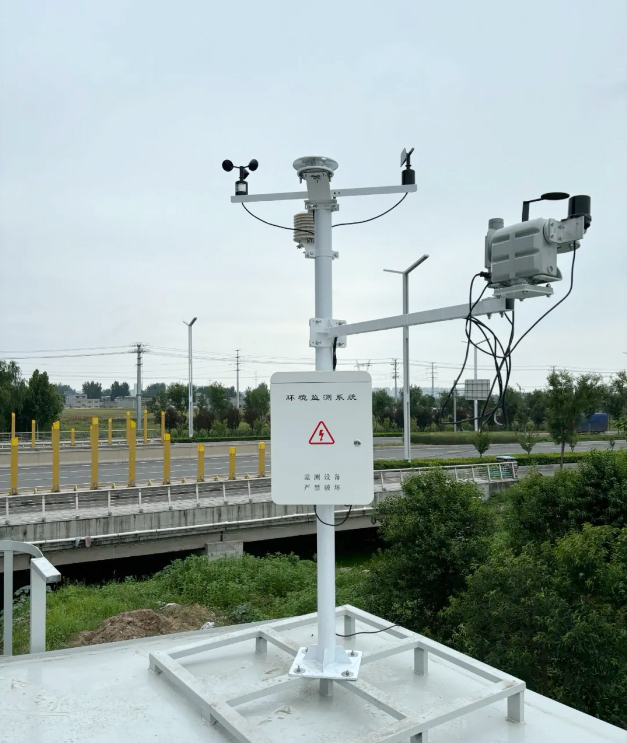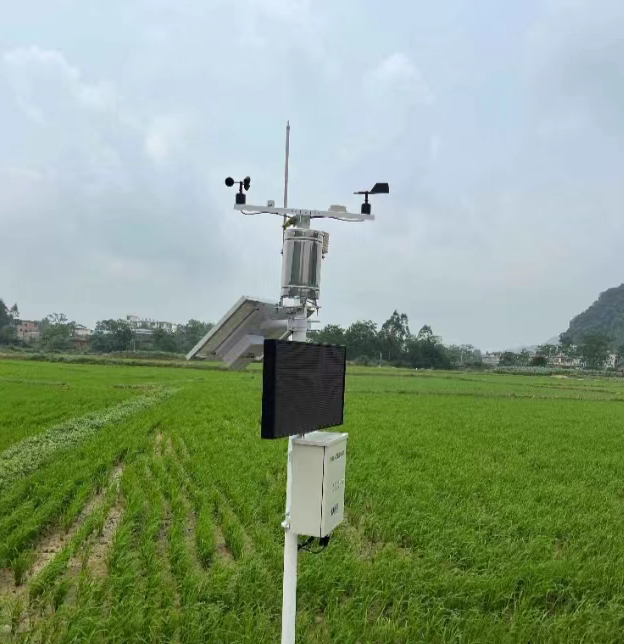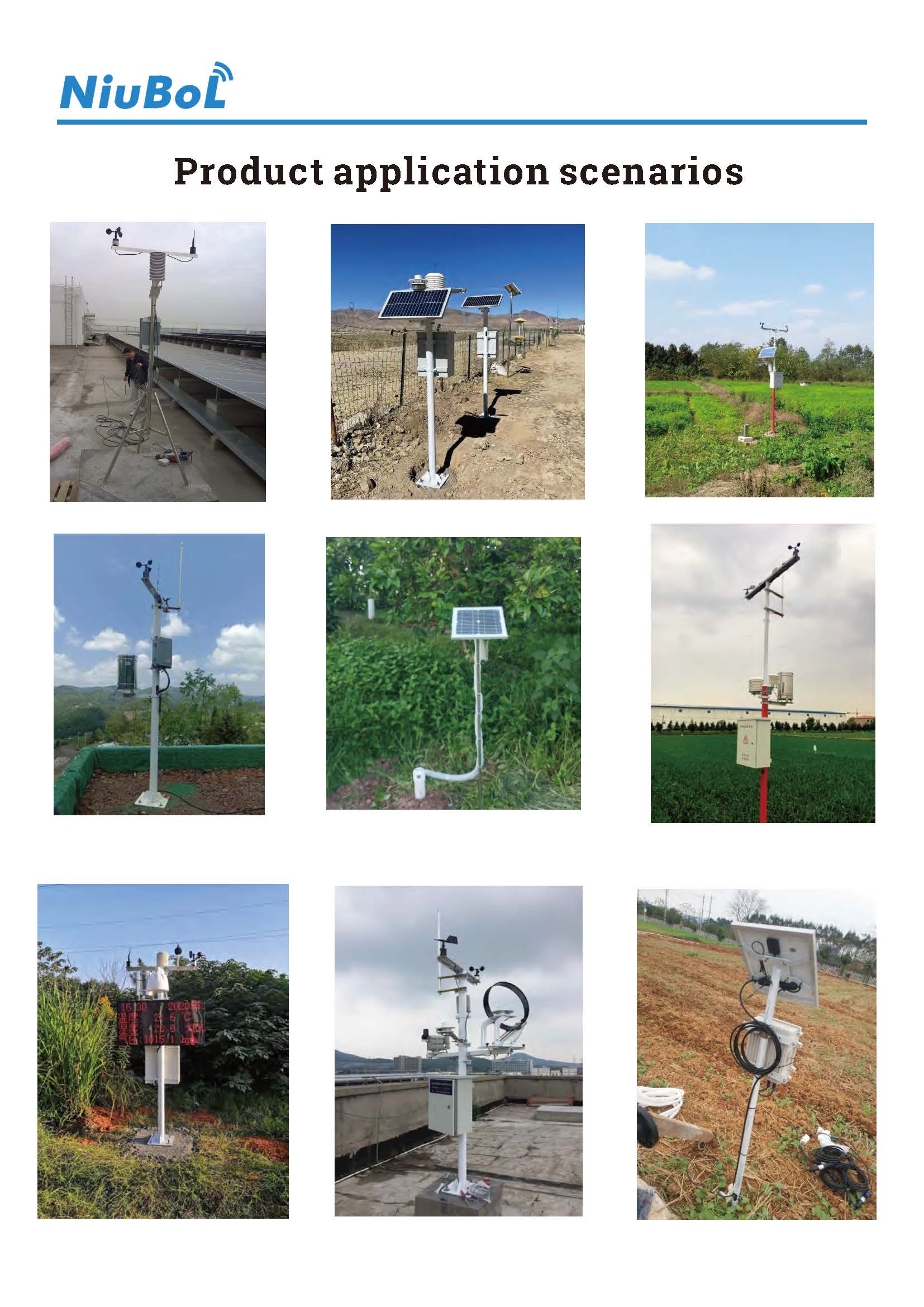

— Blogs —
—Products—
 Consumer hotline +8618073152920
Consumer hotline +8618073152920 WhatsApp:+8615367865107
Address:Room 102, District D, Houhu Industrial Park, Yuelu District, Changsha City, Hunan Province, China
Product knowledge
Time:2024-10-19 21:14:44 Popularity:330
With the popularization of meteorological technology, small weather stations have become an important tool for many individuals and organizations to monitor local weather conditions. Although the installation of small weather station may seem simple, in order to ensure its long-term stable operation and data accuracy, the following installation points should not be ignored.
The data acquisition of small weather station relies on sensitive sensors, which are very sensitive to electromagnetic interference. Therefore, when installing, should try to avoid places with strong electromagnetic fields, such as transformers, high-voltage lines and other nearby areas. Since wind speed and rainfall sensors collect pulsed signals, strong electromagnetic interference may cause signal fluctuations and affect the accuracy of the data. Choosing a relatively clean electromagnetic environment can ensure that the data collected by the weather station is more reliable.
Correct installation of the wind sensor is critical to obtaining accurate wind data. Most wind sensors will have a marking on them that points south, and you need to make sure that this marking is pointing south when installing the sensor. This is so that the sensor can accurately record wind direction information. If it is pointing in the wrong direction, then all wind data will be inaccurate.
The installation site for a small weather station should be as open as possible, with no obstacles such as tall buildings within at least 10 meters. Buildings may affect air flow and cause distortion of wind speed and direction data. Ensuring that there is no obstruction around the weather station will allow the sensor to more accurately capture weather data in its natural environment.
The minimum requirement for site openness when installing a small weather station is to have no tall buildings or obstructions within at least 10 meters. This ensures the natural flow of air currents, avoids interference with the measurement of meteorological parameters such as wind speed and direction, and facilitates the accurate monitoring of other meteorological elements such as temperature and humidity. In addition, if conditions permit, a wider field of view will be more conducive to the accuracy of the data, for example, a flat field of 25 meters x 25 meters is more ideal.
The installation location of the rain sensor is also critical. It should be ensured that the sensor is located away from objects such as stands, trees, etc. that may block the direct drip of rainwater. If rainwater is blocked, it may result in low or distorted rain monitoring data. Choosing a location for installation that ensures natural vertical dripping of rainwater is key to obtaining accurate rainfall data.
The fixation of a small weather station is the foundation of its long-term stable operation. Usually, the weather station will be equipped with expansion screws, which require users to make a cement foundation and fix the weather station on the ground with the screws. Such a fixing can withstand wind and rain and ensure that the weather station can remain stable under various adverse weather conditions, thus ensuring the continuity and accuracy of data collection.
In order to protect the weather station equipment from lightning damage and ensure the safety and continuity of data collection, especially in open areas or high-risk minefields, it is recommended to install independent lightning rods and ensure that all equipment is located within the effective protection range of the lightning rods. It is also necessary to enhance the lightning protection and grounding setup, and reasonably design the voltage and current management of the circuit to adapt to thunderstorms and avoid damage to the equipment caused by strong currents and voltages. This is not only about the continuity of data collection, but also an important safeguard for equipment safety.
To summarize, although the installation of small weather station is not difficult, the details determine success or failure. Following the installation points above will ensure that your weather station is not only installed correctly, but also capable of providing long-term, accurate and reliable weather data. Whether you use it for scientific research, agricultural monitoring, or personal interest, a properly installed small weather station will be your indispensable source of weather information.

After installing a small weather station, regular routine maintenance is the key to ensure its long-term stable operation and data accuracy. Below are some steps and suggestions for routine maintenance:
- Clean the sensors: Clean the sensor surface regularly to remove dust, dirt, insects, etc. to prevent them from affecting the sensitivity and accuracy of the sensors.
- Check Sensor Connections: Ensure that all sensors are connected properly and are not loose or damaged.
- Data backup: Back up the data in the data logger of the weather station regularly to prevent data loss.
- Software Update: Check and update the software of the data logger to maintain optimal performance.
- Check Batteries: If the weather station uses battery power, check the battery status regularly, clean the battery terminals, and replace depleted batteries in a timely manner.
- Solar panels: If solar panels are used, ensure that their surfaces are clean and free from shadows to maintain optimal charging efficiency.
Maintenance of the power supply system of the weather station is the key to ensure its stable operation, and the following main aspects should be paid attention to:
3.1. Regular inspection of cables and circuits for safety: Ensure that the cables are not broken, short-circuited or aged, which is directly related to the normal operation and safety of the system. Conduct regular inspections of electrical circuits to prevent equipment downtime due to electrical failures.
3.2. Solar Panel Cleaning: For weather stations powered by solar energy, the panels need to be cleaned regularly to remove debris such as sand, dust, leaves, etc. in order to maintain their efficient photoelectric conversion rate. Cleaning should be done with soft brushes or non-abrasive cleaning tools to avoid scratching the surface.
3.3. Uninterruptible Power Supply (UPS) Maintenance: In northern regions, many weather stations use UPS as an uninterruptible power supply. Maintenance should ensure that the UPS is in a clean, ventilated environment and that the appropriate ambient temperature is controlled to extend its service life and ensure the stability of the power supply.
3.4. Regular checking of the power supply system: This includes the status of the batteries, the functioning of the charge controllers, and the stability of any connections, to ensure that the power supply system works reliably in bad weather or during long periods of operation.
3.5. Backup power supply preparation: consider setting up a backup power supply solution, such as additional battery packs or a fast-switching power supply system, in case the main power supply fails.
- Check screws and fixings: Ensure that all screws and fixings securing the weather station are not loose and are structurally sound.
- Calibrate sensors: ensure data accuracy by calibrating sensors regularly according to the manufacturer's recommendations.
- Compare data: Compare the data from the weather station with that of the local weather service to verify its accuracy.
- Wireless Signal: If using wireless transmission, check signal strength and stability.
- Wired connections: For wired connections, make sure cables are not damaged and connectors are making good contact.

- Lightning protection: Ensure that the weather station is fitted with proper lightning protection, especially during the thunderstorm season.
- Weatherproofing measures: Check the weather station's waterproofing and windproofing measures to ensure that sensors and electronic equipment are properly protected.
- Maintenance log: Record the time, content and problems found in each maintenance for tracking and maintenance history.
- Operation Training: Provide regular training to personnel using the weather station to ensure that they understand the proper operation and maintenance procedures.
With these routine maintenance measures, the service life of a small weather station can be maximized and its ability to provide accurate and reliable weather data can be ensured.

Conclusion
While the installation of a small weather station is relatively straightforward to operate, every detail is directly related to the accuracy of the data and the service life of the equipment. Following the above guidelines can not only improve the reliability of the data, but also ensure the long-term stable operation of the weather station, providing solid data support for scientific research, agricultural management, environmental monitoring and so on. Correct installation is the first step to successful application of small weather station.
Related recommendations
Sensors & Weather Stations Catalog
Agriculture Sensors and Weather Stations Catalog-NiuBoL.pdf
Weather Stations Catalog-NiuBoL.pdf
Related products
 Combined air temperature and relative humidity sensor
Combined air temperature and relative humidity sensor Soil Moisture Temperature sensor for irrigation
Soil Moisture Temperature sensor for irrigation Soil pH sensor RS485 soil Testing instrument soil ph meter for agriculture
Soil pH sensor RS485 soil Testing instrument soil ph meter for agriculture Wind Speed sensor Output Modbus/RS485/Analog/0-5V/4-20mA
Wind Speed sensor Output Modbus/RS485/Analog/0-5V/4-20mA Tipping bucket rain gauge for weather monitoring auto rainfall sensor RS485/Outdoor/stainless steel
Tipping bucket rain gauge for weather monitoring auto rainfall sensor RS485/Outdoor/stainless steel Pyranometer Solar Radiation Sensor 4-20mA/RS485
Pyranometer Solar Radiation Sensor 4-20mA/RS485
Screenshot, WhatsApp to identify the QR code
WhatsApp number:+8615367865107
(Click on WhatsApp to copy and add friends)